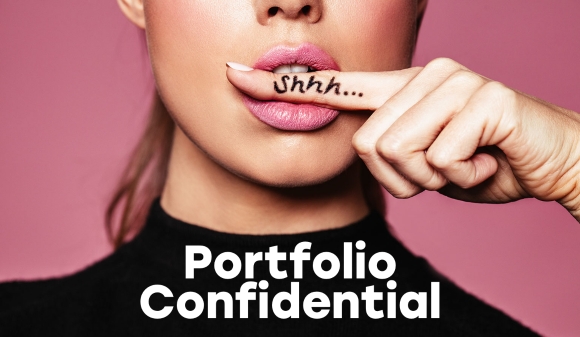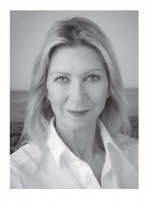Portfolio Confidential

 Here are three real world confidential portfolio discussions.
Here are three real world confidential portfolio discussions.
Q: I have a portfolio of about USD $1 million. Last year I bought 800 shares of Zoom for approximately USD $50,000. The rest of my portfolio is down about five per cent, but Zoom has zoomed, and is now worth $170K, or nearly 20% of my whole stock portfolio. What should I do now?
A: Zoom Video Communications, Inc. (NASDAQ:ZM) is a Silicon Valley company founded in 2011 that provides videotelephony and online chat services through a cloud-based peer-to-peer software platform and is used for teleconferencing, telecommuting, distance education, and social relations.
Full disclosure: I love Zoom! I have been using it daily since the lockdown and because of Zoom I haven’t missed a beat doing my global research interviews with women around the world. But even though I love it and millions of other people love it as an amazing communications tool, this doesn’t mean it should be a fifth of our investment portfolios.
One of the most common mistakes investors make is falling in love with a stock and having a disproportionate amount of money in their beloved. And one of the most common rationales for doing so is “this company is changing the world!” But the trouble is anything can happen at any time to any company…including Zoom. So what to do?
My advice is to re-balance the position in order to maintain a sensibly diversified portfolio. Sell half right away and then half again on a pre-determined date in the near future. The goal is to pare back to the original 5% weighting in an orderly fashion so as not to be driven by emotion.
As fun as it seems now to have 20% in a high-flying momentum stock such as Zoom, this is unlikely to be the case forever. For the sake of risk management, it is best to recognize that holding a 20% position in one stock is in fact deciding to speculate, not invest.
Finally, if you just can’t bear to sell, move your Zoom position to a completely separate account and label it “speculative”—look at it as a standalone holding that could win big or lose big. Also, you will no longer be skewing the performance return or strategy of your “normal” investment portfolio.
Q: I know that gold usually does well in times of trouble. I was thinking about buying some earlier in the pandemic, but didn’t, and it is now up a lot! Is it too late? If it isn’t, which should I buy? Physical bullion, bullion Exchange-Traded Funds (ETFs), gold producer ETFs or actual gold producer stocks? They are all up, but maybe one is a little better value than the others?
A: I reached out to my former colleague Gerry Connor, Chairman/Co-Founder of Cumberland Private Wealth Management Inc. for his views on this topic:
“Gold has been going up and down for years, usually due to fears of inflation or inversely to the value of the U.S. dollar to other currencies. Recently, the U.S. dollar has been strong and inflation pretty subdued, yet the yellow metal is up about 33% in the last year. So, something different seems to be going on this time, likely due to the aggressive monetization of the U.S. debt. Some believe it has further to go.
“How do you invest in gold? Owning physical gold is complicated. The simpler option is to own an ETF that holds bullion. Owning a gold mining stock may offer more leverage, but it is advisable to buy more than one to spread political, geographic, and operating risks. Failing that buy a fund that owns a diversified portfolio of companies. There would be nothing worse than being right on the metal but losing by owning the wrong investment.
I should add that I personally have a reasonable holding in gold.”
Q: I’ve finally sold my apartment in NYC. How should I invest the proceeds? When should I convert to Canadian dollars?
A: It is quite common for investors to think of “new money” as money that needs to be invested in a different way from their existing portfolio. Somehow our brains are wired to believe that money from different sources belongs in different buckets. But unless an investor has completely new investment objectives for this new money there is no reason that it shouldn’t be commingled with their existing portfolio and invested using exactly the same strategy.
The only reason not to mingle the funds is if the purpose (“what is the money for”) is different from the purpose of your other funds.
If you want to buy another property with this money in the near-term…there is not much of a decision to be made, and the funds should not be commingled. If you only have a year or so to invest, it doesn’t make sense to buy stocks or an equity index fund. Although the outlook is positive for equity markets over the long term, there is always the possibility that your new pot of money could have dropped in value in the short time before you want to buy that house. To be on the safe side, place the funds in a short-term fixed income investment vehicle even though today’s interest rates are extremely low. Unless you are certain that you could come up with another source of funds for the house purchase, keep your money out of the stock market for the year.
If on the other hand you have no plans to buy another property and you just want your “new money” to help fund your future income requirements, then just add it to your existing portfolio and invest with the same strategy.
Although experts will always have a view on which way the Canadian dollar is headed, no one really knows for sure. The currency market is one of the fastest moving and least predictable markets. I traded currencies for nearly five years and my biggest lesson was that you are better off to make a decision that will protect you rather than trying to bet on the direction of a currency.
If you think you might have a need for U.S. dollars in the future it might be a good idea to keep a certain amount in U.S. cash to fund future U.S. purchases or pay off U.S. liabilities. Companies do this all the time: they match future obligations. From there, assuming you want to invest right away, determine whether you will be buying securities denominated in U.S. dollars, Canadian dollars, or a combination. Convert the amount that you need to start investing in the Canadian portion of your portfolio. Don’t try and guess which way the currency market will go.
Barbara Stewart, CFA: Do you have questions about your own investment portfolio? I have recently set up The Rich Thinking® Financial Advice Hotline. This will be a win/win: you get a free 30-minute confidential Zoom chat offering an independent, unbiased perspective on your financial situation with no sales pitch! In exchange, I get to use the anonymized data that will come from these conversations to make my Rich Thinking research even better.
Email me to book your Zoom discussion:


